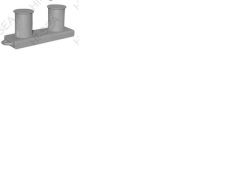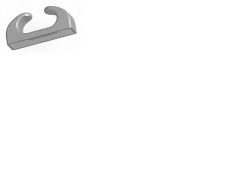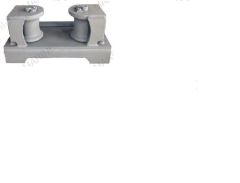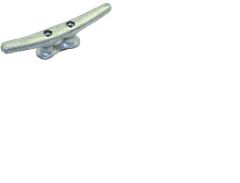![]()
![]()
![]()
Use LEFT and RIGHT arrow keys to navigate between flashcards;
Use UP and DOWN arrow keys to flip the card;
H to show hint;
A reads text to speech;
43 Cards in this Set
- Front
- Back
|
line |
Measured in circumference |
|
|
Wire rope |
Measured in diameter |
|
|
Discuss the difference between three strand and double braid synthetic mooring line, with respect to the following |
a) Strength - Double braid is stronger than 3 strand. b) Breaking Characteristics - Double braid has a higher breaking characteristics *Double braid is more durable* |
|
|
In reference to small boats, what is a Sea Painter? |
Line used to keep the small boat alongside the ship once launched. |
|
|
In reference to small boats, what are steady lines? |
Used to stabilize the small boat during launches and recovering evolutions. |
|
|
In reference to small boats, what is a manrope (monkey line)? |
Used as a means of support for the small boat crew when launching and/or recovering. |
|

What Am I? Describe this as it applies to ground tackle. |
BITT |
|

What Am I? |
Mooring lines are passed through it. |
|

What am I? |
Closed Chock |
|

What am I? |
Roller Chock |
|

What am I? |
Cleat |
|
|
Where is the Bullnose located? |
Forward most part of the ship. |
|
|
What is the Hawse Pipe? |
A large pipe that an anchor chain runs through. his is where the anchor is stowed |
|
|
(Anchor) Chain |
Hold the ship in place when at anchorage |
|
|
Turn Buckle |
Used on the stopper assembly to secure the anchor |
|
|
Gypsy Head |
Used to heave around on the lines and wires |
|
|
Capstan |
Cylindrical device on the deck used to tak turns oe or wire around to heave in line or wire |
|
|
Detachable Link |
Used to connect links of chain together |
|
|
Chain Marking |
Lets you know how much chain you have out on deck. |
|
|
Anchor |
Used to hold ships position. |
|
|
Chain stopper |
Used to secure the chain and anchor. |
|
|
Pelican hook |
Part of the stopper that actually secures the chain. |
|
|
Wildcat |
Used for hoisting and controlled lowering of the anchor. |
|
|
Anchor brake |
Keeps the chain from paying out. |
|
|
Anchor buoy |
Identifies where anchor is when at anchor. |
|
|
Cable Jack |
used to push up chain to apply the pelican hook |
|
|
Preventer |
prevents the screw pin shackle from loosening |
|
|
swival shot |
allows the anchor in the anchor chain to move freely |
|
|
Spring line |
Six strands of wire wrapped around a fiber core. |
|
|
Hawser |
Any heavy line or wire used for towing or mooring. |
|
|
Small stuff |
Line 1 ¾ or smaller. |
|
|
Marlin |
Two strand left laid tarred hemp small stuff. |
|
|
Flemish |
Line coiled flat and tight. |
|
|
Coil |
Make a circle with line and pile it on top of itself. |
|
|
Fake |
The act of disposing of line, wire, or chain by laying it out in long, flat bights, alongside the other. |
|
|
Heaving lines |
A line with a weight at one end, heaved across an intervening space for passing over a heavier line. |
|
|
Bight: |
A loop of rope, line, or chain. |
|
|
Bitter end |
The end of a line. |
|
|
Eye / Eye splice |
Hole in the end of a line used for mooring / Used to make an eye at the end of a line |
|
|
Long splice |
Used to join two pieces of line with out changing its circumference |
|
|
Short splice |
Used to join two pieces of line. |
|
|
Marlinespike |
Tapered steel tool used to open the strands of wire for splicing |
|
|
Fid |
Wooden spike shaped tool used in splicing line |

